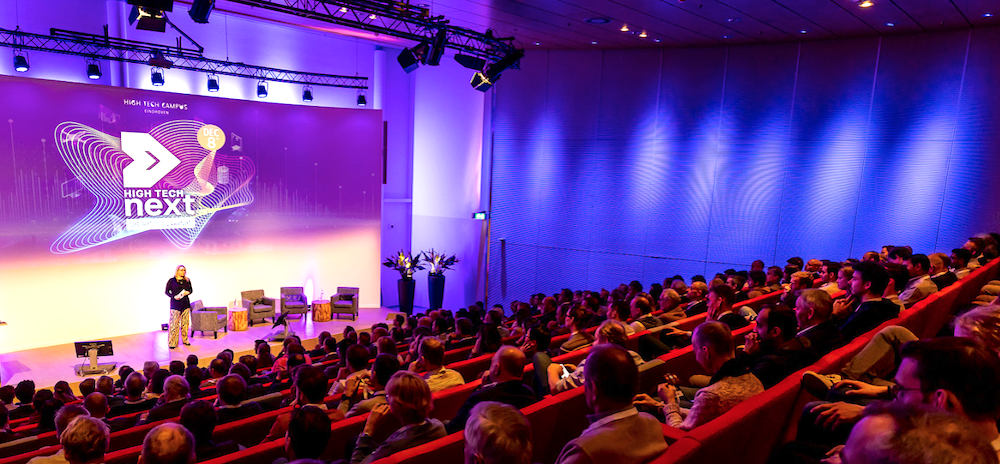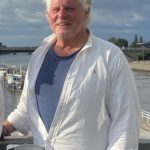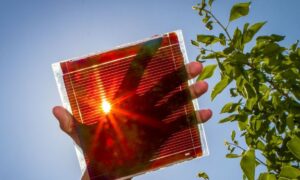(Editor’s note: This Eindhoven Business Briefing dedicated to High Tech Next is part of our Tech Tuesday series. Dispatches covers the Eindhoven ecosystem because so many of our highly skilled internationals work in tech.)
We go to a lot of tech events, and not all of them live up to the hype. But High Tech Next delivered on a number of levels.
We’re still processing, but our biggest takeaway is that this city and region are redefining how the world thinks about the Netherlands.
No more tulips, windmills and canals. From now on, the image is going to be all about photolithography, photonics, AI, medtech, robotics and everything the Netherlands does better than anywhere else. And Eindhoven is at the vanguard of what promises to be a Brabant decade with the world’s most advanced technology coming out of ASML, NXP and other companies.
What we liked best was, High Tech Next at High Tech Campus Eindhoven brought together people who matter. People who get that “the future is being invented here” mantra isn’t just hyperbole. It’s why the tech coming out of Eindhoven is revolutionizing multiple global industries, including semiconductor, healthcare, robotics, photonics and environmental engineering.
It put Eric Rondolat, CEO of one of Eindhoven’s low-profile, high impact CEOs on stage, a guy typically only available to global media outlets such as MSNBC. Which was cool. But a second speaker, former member of the Dutch parliament and current entrepreneur Klaas Dijkhoff, confirmed everything we’ve been saying for years about Eindhoven’s role in the Dutch innovation ecosystem and about our regional destiny.
The day-long, sold-out event at the High Tech Campus Conference Center included keynote talks from Rondolat, Dijkhoff and educator and entrepreneur Carmen van Vilsteren. It also featured a panel composed of innovators pondering business opportunities of the Metaverse.
Here are High Tech Next summaries in the order they were given:

Signify CEO says ‘non!’ to working from home
This is the CEO of Signify, one of Eindhoven’s Big 5 companies, with a total market capitalization of about 4 billion euros, a guy who rarely gives interviews to anyone other than MSNBC and that ilk. So, the Dutch media was there in force just to hear what Rondolat had to say. And they got an earful and not only about lighting.
Moderator Ingelou Stol, High Tech Campus communication manager, asked Rondolat about Signify’s position on work-from-home and got a very adamant “Non!” from the French/Italian executive. “We are fundamentally against it,” he said. “Humans need humans. We’re not hiding it.” Signify employees are expected to work as teams, Rondolat added: “How can you innovate from home?”
Working from home might seem convenient to employees, but Rondolat says he sees too many people working late to try to keep up. He also criticized the Silicon Valley mentality where tech companies expect people to work long hours.
“I don’t want people to work till 10 o’clock. Who wants a life like that? I get no energy from that.”
Signify – which started as Philips Lighting – is a world leader in lighting for agriculture, workplaces and factories. But there’s so much more than illumination, Rondolat said. LED light technology is essential to all innovation and will revolutionize life in the near future. Currently, LED technology brings increased safety and productivity to the factory floor. In the future, it will bring secure connectivity to the workplace in the form of Li-Fi LED data beams. And at Signify, LED technology is increasing rapidly in efficiency, requiring less and less energy, yet lasting 10 times longer.
“There is no other industry in the world – there is absolutely no other technology – that is saving as much in such a simple fashion, with such a return on investment,” he said.
Signify has about 35,000 employees across the globe, including operations in China and the United States. The company has had strong earnings reports as of late. For Q3, 2022, comparable sales rose to 1.91 billion euros from 1.64 billion euros for the same quarter one year ago. Net income rose 18.4 percent to 112 million euros from 94 million euros for the same quarter in 2021.
Rondolat told the High Tech Next audience that today, Signify has moved past Horizon One (older products) and Horizon Two (current technology) to Horizon Three, with the company spending heavily on future technologies. “From the era of conventional (connectivity) to an era of LED connectivity and new technology in Horizon Three, innovation is a big part of our story,” Rondolat said.
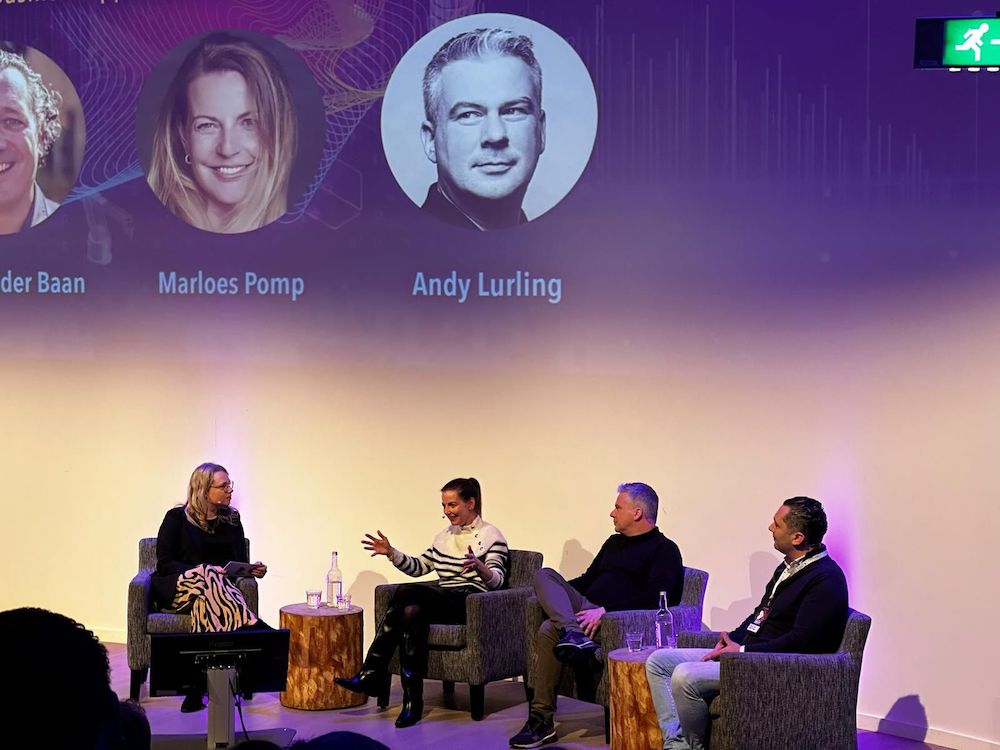
Metaverse
“Business opportunities of the Metaverse and Web3”
Will the Metaverse improve our lives and give us new business opportunities, or will it overwhelm societies with non-stop information and stimulation? Panelists Andy Lürling, LUMO Labs founding partner, blockchain expert Marloes Pomp and Alex van der Baan, CEO of Your Open Metaverse, mostly agreed the Metaverse is essentially the next Internet but far more immersive and far more disruptive.
Though Pomp noted that the Metaverse is still a concept, the panel noted clearly emerging business verticals, including gaming and entertainment. “Basically, anything with fans,” van der Baan said. But unlike phones and computers, which you can switch off, Web 3 and the Metaverse can’t be shut off,
Lürling said. “It’s always there.”
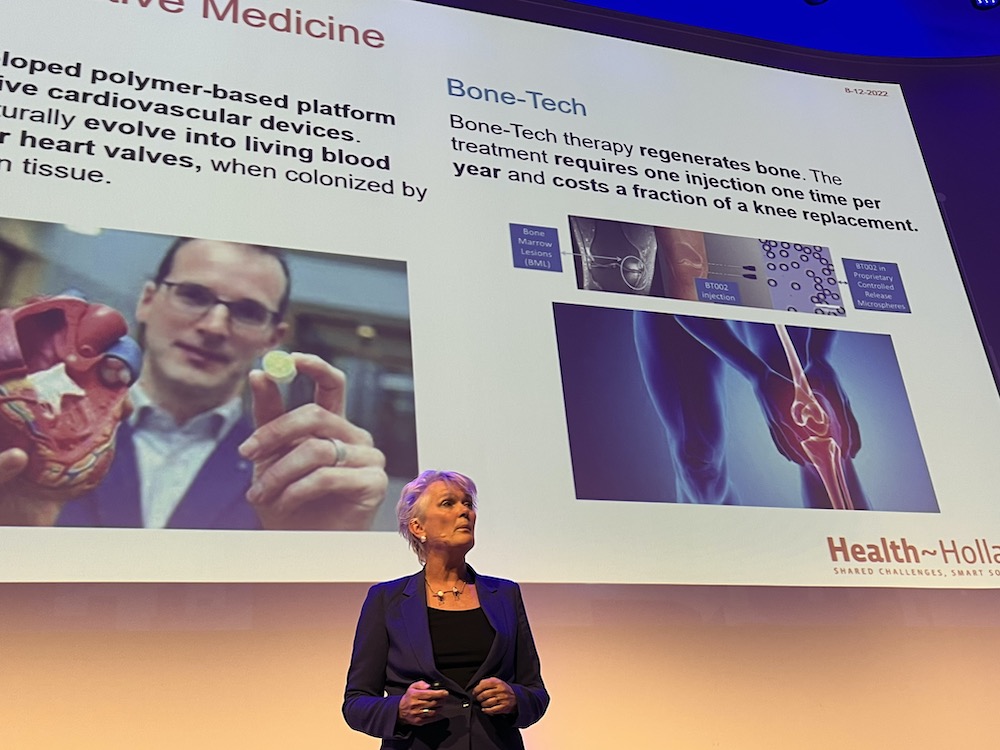
Carmen van Vilsteren on the future of healthcare
“The 5 transformations of future health: technologies affecting business and society“
One out of six people work in care. That’s unsustainable, says Carmen van Vilsteren, who’s a professor at Technical University of Eindhoven, a national policymaker and an entrepreneur. Fortunately, new technologies in life sciences and health are transforming healthcare from a labor-intensive industry to a data-driven, innovation-intensive industry. New technologies, including artificial intelligence and photonic sensors, make everything possible, from predicting infection rates to creating hospitals without beds “where we’ll only go for intervention,” Van Vilsteren said. We can even reverse aging, she noted.
But sensor technology, gene therapy, organs on a chip and the rest require serious investment, and Brainport is a major medtech innovation center, van Vilsteren said. “To not invest would be a serious risk for our ambitions,” she said.

Klaas Dijkhoff on Eindhoven’s future
“Brainport Eindhoven: How to take the region’s economic and innovation power to the next
level.”
Former parliamentarian, behavioral scientist, co-founder of SUE and the Alchemists consulting firm and Brainport advocate Klaas Dijkhoff noted Eindhoven and Brabant are experiencing phenomenal economic success and historic growth, with those trends projected to accelerate over the next decade. “The next big step cannot be accommodated in the region physically anymore. So, if you see the mindset, the things that are happening … are so successful that we need to expand.”
The Netherlands as a whole needs to embrace with government funding the Eindhoven model of creating the most advanced technologies. But the fact that Eindhoven thrives in the esoteric outer limits of technology when the rest of the country has factories and ports means Brainport isn’t front of mind. “It’s so clever what you will do here that people don’t understand it,” said Dijkhoff, who is based in Breda.
To get support, Brabant needs to end regional rivalries by embracing the surrounding regions and pulling them into Brainport, he said.
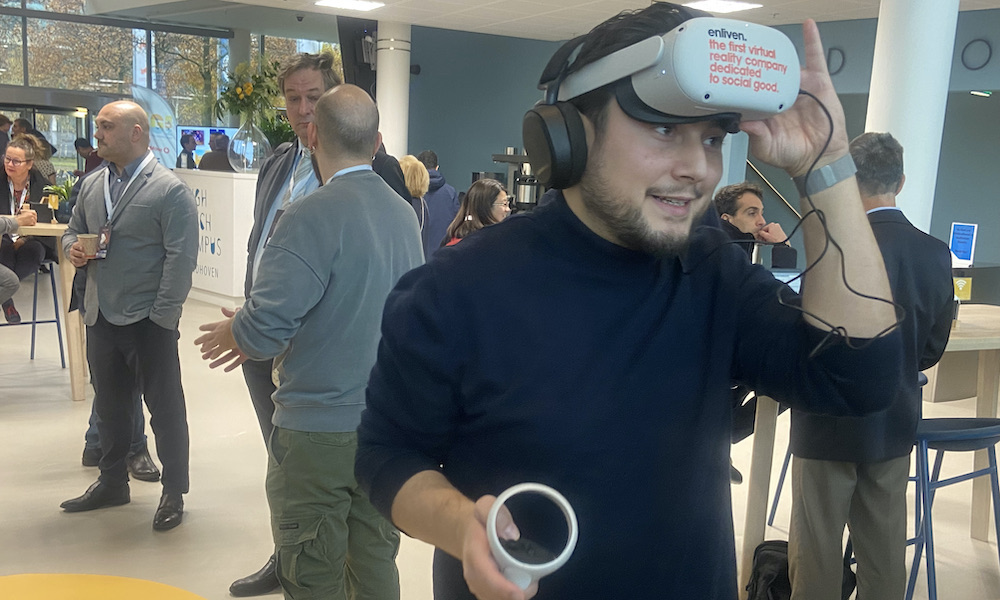
High Tech Next also included displays by Eindhoven’s most promising startup and scale-ups including:
• Stintit, which makes a stint that includes a regenerative element that helps heal the artery.
• inPhocal, which uses proprietary laser technology for advanced industrial printing.
• Axelera AI, which is developing hardware/software solutions for AI inference at the Edge, enabling
computer vision applications to become more accessible, powerful and user friendly.
• Carbyon, which has developed technology to remove CO2 from the atmosphere.
• Sirius Medical, which has technology that provides real-time, directional guidance using audio and visual feedback for increased precision in locating tumors.
• Enliven, which is creating virtual reality technology to address issues such as abuse and addiction.
Co-CEO of Dispatches Europe. A former military reporter, I'm a serial expat who has lived in France, Turkey, Germany and the Netherlands.


